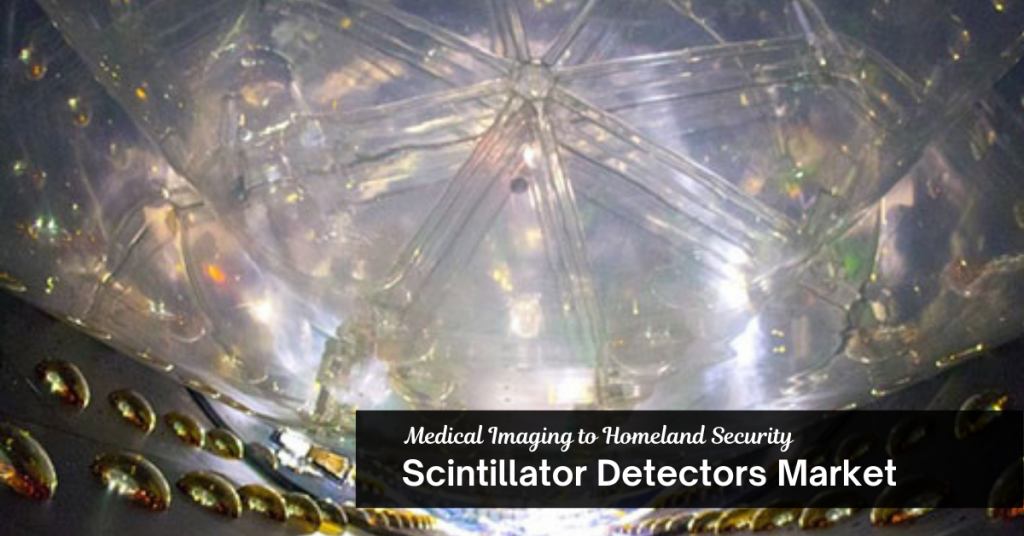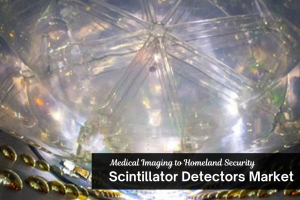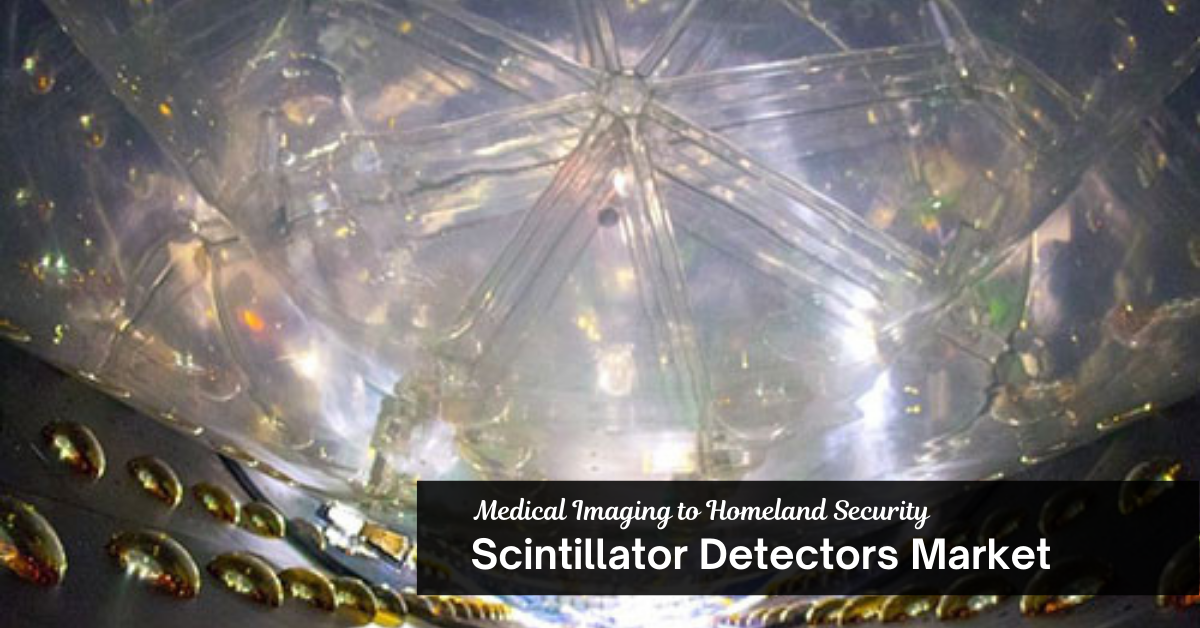
Market Overview
The global Scintillator Detectors Market is witnessing accelerated momentum, with its size estimated at USD 1,245 million in 2024 and projected to reach USD 2,426.6 million by 2032, growing at a CAGR of 8.7% during the forecast period (2024–2032). These detectors, critical in transforming ionizing radiation into visible or near-visible light, serve as foundational tools in a wide array of industries—from healthcare and nuclear energy to aerospace and homeland security.
As global industries face increasing demand for precision and safety, scintillator detectors have emerged as indispensable due to their accuracy, rapid response time, and wide detection range. Their application has expanded beyond conventional usage into sectors such as environmental monitoring, geological exploration, and advanced scientific instrumentation. In medical diagnostics, for instance, scintillator-based PET and gamma cameras are improving early detection and treatment planning capabilities.
Additionally, the global focus on nuclear safety and the revival of nuclear power programs in many countries have led to increased adoption of radiation detection technologies. Coupled with rising defense spending and the need for threat detection systems, the market continues to evolve. With continuous innovations in photodetector coupling, data processing, and scintillation material development, the scintillator detectors industry is positioned for sustained and diversified growth across regions and end-use industries.
Read full report: https://www.credenceresearch.com/report/scintillator-detectors-market
Market Drivers
Rising Adoption in Environmental Monitoring
Environmental agencies and research institutions are increasingly using scintillator detectors to monitor radiation levels in soil, water, and air. In regions close to nuclear facilities or with mining activities, accurate radiation detection is crucial to ensure public safety. These detectors offer continuous, real-time measurement capabilities that meet stringent safety and environmental regulations. With growing concerns around radioactive contamination and climate change, environmental monitoring systems have become a critical application area. Mobile, remote-sensing, and drone-mounted detectors are expanding capabilities in this sector, opening new commercial opportunities for manufacturers.
Increased Demand from Space and Aerospace Sectors
Scintillator detectors play a vital role in space exploration and aerospace applications, including cosmic radiation measurement and spacecraft health monitoring. Agencies like NASA and private players rely on these detectors for research missions and satellite operations. With a surge in satellite deployments and planned human missions to the Moon and Mars, high-performance radiation detection is essential for mission success and crew safety. Innovations in lightweight and high-temperature-resistant scintillators are being tailored for extraterrestrial environments. This segment is gaining strategic importance as global investments in space programs accelerate.
Growing Role in Academic and Industrial Research
Universities, laboratories, and industrial R&D units extensively use scintillator detectors in experimental setups. Whether it’s for neutron detection, high-energy physics, or quality control in manufacturing, the flexibility of these detectors makes them essential in research environments. Their adaptability to different measurement configurations enables their use in dynamic experimental conditions. The growth of academic-industry partnerships is driving investment in customized detectors. With the growing number of global research collaborations and funding from institutions, the use of high-end detection tools is expanding rapidly.
Development of Scalable and Modular Detector Systems
The industry is shifting toward scalable detector designs that can be customized based on specific application requirements. Modular scintillator systems allow easy upgrades and integration into existing workflows, making them a cost-effective solution for institutions with varying needs. This modular approach is especially beneficial in medical imaging, where equipment can be tailored to patient volume or service complexity. Similarly, in industrial applications, modularity helps reduce downtime and improves maintenance flexibility. The trend aligns with the growing demand for smarter and more adaptable technologies across all end-user segments.
Market Challenges
Complexity in Detector Calibration and Maintenance
Scintillator detectors require precise calibration to ensure accurate results, particularly in critical fields like medicine or nuclear safety. The complexity of these calibration procedures often necessitates expert handling and regular maintenance, increasing operational burdens for end-users. In remote or resource-limited settings, these requirements can lead to higher downtime and reduced performance. This limits their usability in emergency situations or mobile deployments. Manufacturers must develop more user-friendly calibration interfaces and self-correcting systems to address this challenge.
Material Degradation and Performance Drift
Certain scintillating materials degrade over time when exposed to radiation or fluctuating environmental conditions. This degradation affects performance accuracy, sensitivity, and lifespan. Plastic scintillators, for instance, are cost-effective but often face early wear. The need for frequent replacement adds to operating costs and limits deployment in long-term monitoring scenarios. Material innovations are required to enhance resistance and durability while maintaining affordability. End-users are increasingly demanding longer warranty periods and reliability assurances from vendors.
Regulatory Compliance and Certification Delays
Achieving certification for scintillator detectors in medical or nuclear applications can be time-consuming and cost-intensive. Compliance with international and regional standards involves rigorous testing and documentation, often leading to delays in product rollout. These barriers are especially significant for new entrants or small and medium-sized enterprises (SMEs) seeking market expansion. Differences in regional frameworks add another layer of complexity, requiring tailored product versions. Companies must build internal regulatory expertise to streamline these processes and minimize time-to-market.
Limited Awareness in Developing Economies
While developed markets have embraced scintillator technology, awareness in many developing regions remains limited. Budget constraints, lack of technical expertise, and infrastructural deficiencies slow adoption. In markets such as Africa or parts of Southeast Asia, the need for radiation monitoring exists but often lacks policy support or funding. Awareness campaigns, training programs, and demonstration pilots are needed to unlock these markets. Local partnerships and distribution networks can play a critical role in overcoming these adoption barriers.
Market Opportunity
Miniaturization of Detector Devices
The push toward compact, lightweight devices is transforming radiation detection technology. Scintillator detectors are being miniaturized for use in wearables, handheld units, and robotic systems. This opens up opportunities in disaster response, environmental surveys, and mobile diagnostics. The miniaturization trend also allows integration into drones and autonomous systems for real-time remote radiation assessment. As miniaturization advances, battery efficiency and wireless connectivity are becoming essential complementary features.
Customized Solutions for Industry-Specific Needs
Manufacturers are now designing application-specific scintillator detectors tailored for unique industry challenges. In the oil and gas sector, for example, detectors are adapted for downhole logging tools. In food processing, they are used for contamination checks and quality assurance. This customization trend is enabling businesses to adopt radiation detection as part of their process automation. Specialized configurations, such as waterproof or explosion-proof detectors, are in increasing demand.
Collaborative Development Between Public and Private Sectors
Government contracts and public-private partnerships are driving innovation in the scintillator detector space. Military, environmental, and healthcare projects often rely on funding and expertise sharing between research bodies and manufacturers. Such collaboration accelerates the deployment of cutting-edge detection technologies. Initiatives around national nuclear safety and public health are creating procurement opportunities for vendors. These partnerships help validate emerging technologies and ensure market-ready solutions.
Growth in Digital Healthcare and Remote Diagnostics
The rising adoption of digital healthcare platforms is driving demand for mobile diagnostic devices, including scintillator-based imaging tools. These portable solutions are being deployed in rural clinics and temporary setups to extend access to medical imaging. As telehealth expands, there is a growing requirement for reliable yet lightweight detectors that integrate with cloud-based systems. Future opportunities lie in combining these detectors with AI diagnostics, electronic health record systems, and IoT platforms.
Market Segmentation
By Product Type
- Inorganic Scintillators
- Organic Scintillators
- Plastic Scintillators
By Application
- Medical Imaging
- Homeland Security
- Nuclear Power Plants
- Industrial Applications
- Particle Physics
By Region
- U.S., Canada, Mexico
- Europe: UK, France, Germany, Italy, Spain, Russia, Belgium, Netherlands, Austria, Sweden, Poland, Denmark, Switzerland, Rest of Europe
- Asia Pacific: China, Japan, South Korea, India, Thailand, Indonesia, Vietnam, Malaysia, Philippines, Taiwan, Rest of Asia Pacific
- Latin America: Brazil, Argentina, Peru, Chile, Colombia, Rest of Latin America
- Middle East & Africa: GCC Countries, South Africa, Rest of the Middle East and Africa
Regional Analysis
North America
The North American market continues to lead in terms of revenue generation, thanks to strong demand from medical diagnostics, homeland security, and nuclear energy sectors. The U.S. has established itself as the primary hub for detector innovation, supported by government research grants and strategic defense procurement. Canada’s focus on nuclear medicine and academic research also adds depth to the regional landscape. Infrastructure maturity and a culture of early technology adoption solidify the region’s dominance.
Europe
Europe maintains a solid foothold in the scintillator detectors market, with major activity centered around nuclear safety programs and medical imaging advancements. Countries like France and Germany are actively investing in research and renewable energy initiatives, supporting broader adoption of radiation monitoring technologies. Collaboration between public institutions and tech manufacturers fosters a robust innovation pipeline. The region also benefits from cross-border standards that streamline regulatory approvals across member countries.
Asia Pacific
The Asia Pacific region is emerging as the epicenter of growth. Driven by rapid industrialization, increasing healthcare investments, and the expansion of nuclear energy programs, demand is escalating in China, India, and Southeast Asian countries. The region’s cost-competitive manufacturing capabilities are attracting global players to establish local facilities. Additionally, favorable government policies and international collaborations are enabling the rise of indigenous detector manufacturing firms.
Latin America and Middle East & Africa
Although currently niche, these regions offer substantial long-term potential. Brazil and Argentina are leading in the deployment of medical imaging tools, while the Middle East is enhancing homeland security and energy programs. Africa is gradually adopting radiation monitoring in mining and healthcare. International aid and technology transfer programs are key enablers for adoption in these regions. As awareness and funding grow, these markets are expected to contribute more significantly to global revenues.
Top Companies
- Alpha Spectra, Inc.
- Nihon Kessho Kogaku Co.
- Dynasil Corporation of America
- Saint-Gobain S.A.
- Scintacor
- Hamamatsu Photonics K.K.
- Hitachi Metals Group
- Amcrys
- Shanghai Siccas High Technology Corporation
- Detec
- Rexon Components, Inc.
- Toshiba Materials Co., Ltd.
- EPIC Crystal Co., Ltd.
Future Outlook
- Innovation in scintillating crystals will reduce weight and improve energy efficiency.
- Demand for AI-enabled detection systems will increase across healthcare and security.
- Modular detector platforms will dominate industrial and academic markets.
- Latin America and Africa will gradually emerge as growth contributors.
- Cloud integration will become standard in medical and environmental applications.
- Hybrid imaging systems will drive demand for high-performance scintillators.
- Space exploration missions will create new use cases for radiation detection.
- Environmental monitoring will expand in line with global sustainability goals.
- OEM partnerships will accelerate smart detector development.
- Rising education and training programs will boost global awareness and adoption.
Read full report: https://www.credenceresearch.com/report/scintillator-detectors-market



